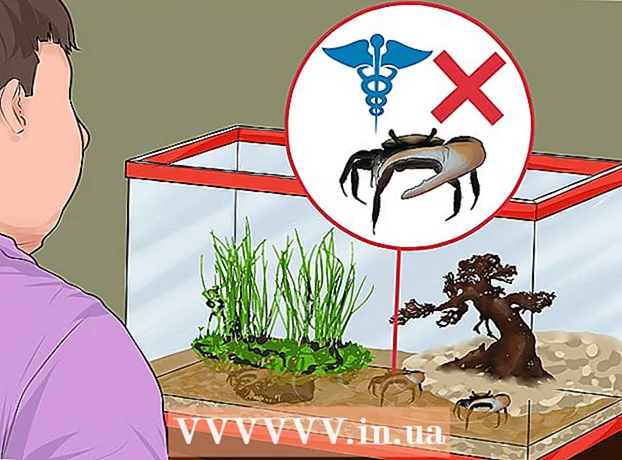
Content
When doing normal maintenance on your vehicle, in addition to checking the oil, tires, brakes and other safety devices, you should remember to check the radiator hoses. The radiator is one of the most important devices in your car because it maintains the engine's rated operating temperature, usually between 90 and 105 degrees Celsius. The radiator hoses circulate coolant from the radiator to parts of the engine that need to remain cold. Over time, the radiator hoses can become loose. If not replaced in time, they can rupture completely, leading to overheating of the engine and inability to start. In the worst case scenario, a hose rupture can cause the engine to jam. This article describes how to check radiator hoses to help keep your engine from overheating.
Steps
 1 Find both radiator hoses. One of the reasons why radiator hoses are ignored during routine vehicle inspections is that they can be difficult to reach.
1 Find both radiator hoses. One of the reasons why radiator hoses are ignored during routine vehicle inspections is that they can be difficult to reach. - The upper radiator hose runs from the radiator to the engine. Usually, in most cases, you can see these hoses.
- The lower radiator hose is more difficult to find. To find it, you need to get under the car and examine the smaller diameter hose that goes from the radiator to the hot part of the car.
 2 Inspect each radiator hose. Hoses must not be swollen or cracked that could rupture.
2 Inspect each radiator hose. Hoses must not be swollen or cracked that could rupture.  3 Perform a compression test. With the engine warm after driving, squeeze the radiator hoses, paying particular attention to the places where the hose bends.
3 Perform a compression test. With the engine warm after driving, squeeze the radiator hoses, paying particular attention to the places where the hose bends. - A radiator hose in good condition should feel firm but not stiff.
- The radiator hose in poor condition feels very hard, porous, or soft. You may find one soft spot that is softer than the rest of the hose. The soft hose or hose with a soft section must be replaced.
 4 Check the clamps on the radiator and engine hose connections. There are 3 different types of radiator hose connections: serrated clamps, plate clamps and wire clamps.
4 Check the clamps on the radiator and engine hose connections. There are 3 different types of radiator hose connections: serrated clamps, plate clamps and wire clamps. - Serrated clamps, sometimes called worm gear clamps, and plate clamps, also called screw clamps, are usually stainless steel and wrapped around the hose. These types of clamps can be tightened with a screwdriver.
- The wire clamps are adjusted on the hose with a pair of clamp pliers. You can recognize these clamps because they fit snugly on the hose without a screw.
Tips
- Clamps are very inexpensive.When you determine that it is time to replace the hose, replace the clamps on the hose connections to the radiator and engine at the same time.
- Hoses installed on a new car are usually serviceable for about 10 years or 160,000 km of the vehicle's mileage. It is best if you test these hoses well before you reach these parameters.
Warnings
- Never open the cover of a hot radiator. Pressurized boiling coolant inside the radiator can spill out and cause severe burns.
What do you need
- Hose inspection flashlight under the hood
- Screwdriver for tightening the clamps, if necessary
- Clamp pliers to adjust the wire clamps as needed



